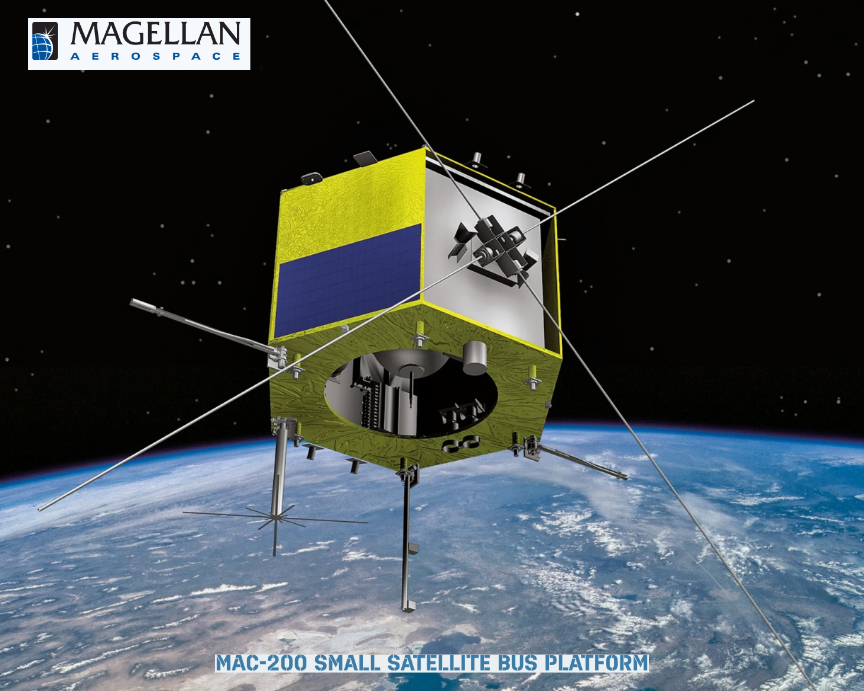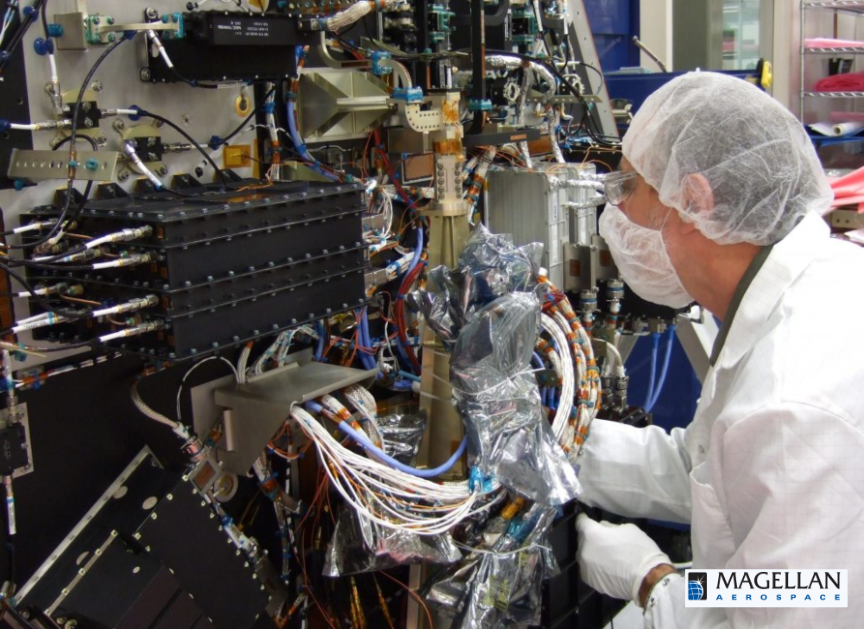
The University of Manitoba (UM) and Magellan Aerospace (Magellan), in collaboration with Canada’s Department of National Defence (DND) science and technology organization, Defence Research and Development Canada (DRDC), and the United Kingdom’s Defence Science and Technology Laboratory (Dstl), are working together to to monitor and protect the Earth’s orbital environment.
Magellan and UM, both based in Winnipeg, Manitoba, are currently partnered on the DND-funded Redwing space domain awareness (SDA) microsatellite project. Redwing is a research and development (R&D) microsatellite valued at $15.8 million that is being designed, built, and operated in Canada.

Redwing will monitor objects orbiting Earth to help reduce future risks to Canada’s space infrastructure from space debris or human-caused interference. Magellan is responsible for designing, building, and testing the Redwing spacecraft as well as for mission operations. Other Redwing mission partners include ABB Inc. (main optical payload), C-CORE (operations support), as well as York University and UM (R&D support).

In April 2024, Canada’s DND signed a contract option with Magellan for $900,000 to add a companion nanosatellite to the Redwing mission. The nanosatellite, known as Little Innovator in Space Situational Awareness (LISSA), will be integrated with the Redwing satellite and will be deployed from Redwing sometime after launch once the two spacecraft have achieved an orbit at the designated altitude.
Leveraging the expertise provided by Ferguson and UM’s STARLab, Magellan is contracting the design and build of LISSA with UM. LISSA will follow in the same orbit as Redwing, operating some distance from it in a tandem in-track formation. In addition to performing its own observations, LISSA will serve as a convenient nearby object with which to exercise Redwing’s own monitoring and imaging capabilities.
LISSA will focus on observing satellites as they pass over the Earth’s South Pole, a region that is not well-covered by ground-based space surveillance sensors. Reflected light from ice and clouds during the Antarctic summer presents a significant technical challenge when imaging other space objects in visible light. For this reason, the UK’s Dstl is providing a short-wave infrared camera to be hosted on the LISSA nanosatellite, which will be less impacted by light scattered from the ice sheet. Also, many satellite materials are more reflective in the short-wave infrared increasing the likelihood of detecting them.
Both Redwing and LISSA are expected to launch in 2027. Both satellites will be operated by Magellan with support from UM’s STARLab, communicating through ground antenna stations owned by C-CORE in Inuvik, Northwest Territories and Happy Valley-Goose Bay, Newfoundland and Labrador. Mission data will be analyzed by DRDC and Dstl.
“Collaborations between industry, academia, and government are the foundation of innovation in the space sector. These partnerships merge cutting-edge research with industry expertise, accelerating advancements that will shape the future of space exploration and will cultivate the next generation of space professionals. By working together on LISSA and Redwing, we can yield superior results in space domain awareness that would be impossible in isolation,” said Corey Mack, Magellan’s Director of Engineering and Space Systems.
“With new launch companies providing unprecedented access to space, we need to research and develop new ways of monitoring space objects from small spacecraft to prevent collisions and to maintain space sustainability for the entire planet. This is a challenge of global scale, requiring international collaboration between industry and academia,” said Philip Ferguson, Associate Professor, Department of Mechanical Engineering and lead of UM’s Space Technology and Advanced Research Laboratory (STARLab). “Research partnerships are critical to the future of the global space industry. This project between the UM, Magellan, DND, and Dstl will create sustainable technologies for the next generation of satellite missions.”
“The space domain continues to change and evolve and requires space faring nations to innovate to keep informed of the security situation in the space domain. DRDC is thrilled to have Dstl participate in the Redwing mission to help grow both nations’ defence space programs,” said Scott McLelland, DRDC Director of R&D for the Defend North America strategic focus area.
“The collaboration with our Canadian partners will enable us to improve the characterisation of objects and maintain security in space to protect our mutual interests,” said Dr. Gemma Bagheri, Dstl Space Research and Development Program Manager.
About Magellan Aerospace Corporation
Magellan Aerospace Corporation is a global aerospace company that provides complex assemblies and systems solutions to aircraft and engine manufacturers, and defence and space agencies worldwide. Magellan designs and manufactures aeroengine and aerostructure assemblies and components for aerospace markets, advanced proprietary products for military and space markets, and provides engine and component repair and overhaul services worldwide. Magellan is a public company whose shares trade on the Toronto Stock Exchange (TSX: MAL), with operating units throughout North America, Europe, and India.
About University of Manitoba
The University of Manitoba is recognized as Western Canada’s first university. It is part of the U15, ranking among Canada’s top research-intensive universities and is Manitoba’s only medical-doctoral post-secondary institution. The University provides exceptional liberal arts, science and professional programs of study, inspiring undergraduate and post-graduate students to positively impact their communities as globally engaged citizens. UM campuses are located on the original lands of Anishinaabeg, Ininiwak, Anisininewuk, Dakota Oyate and Dene, and on the National Homeland of the Red River Métis. We respect the Treaties that were made on these territories, we acknowledge the harms and mistakes of the past, and we dedicate ourselves to move forward in partnership with Indigenous communities in a spirit of Reconciliation and collaboration.
